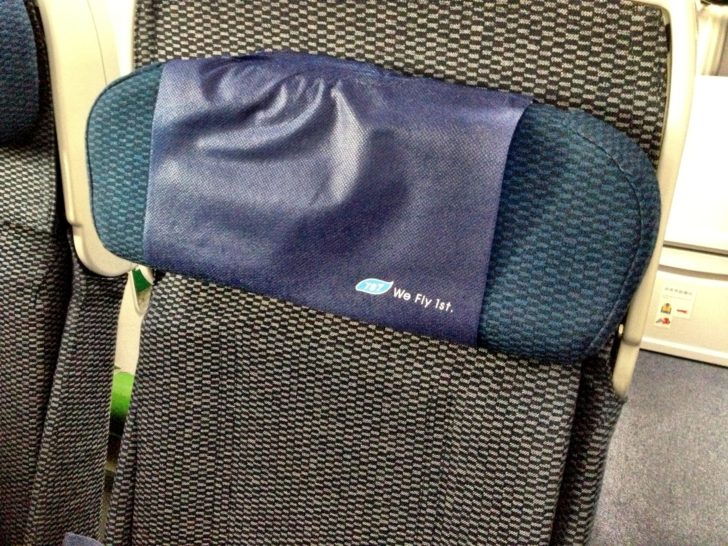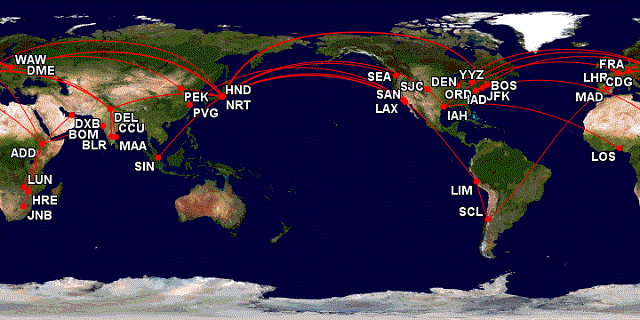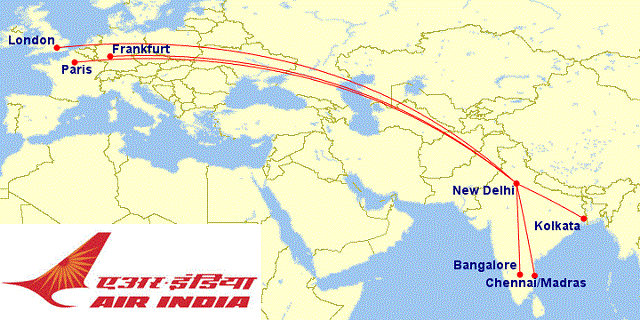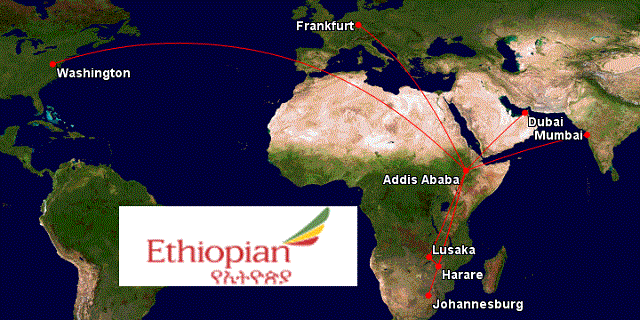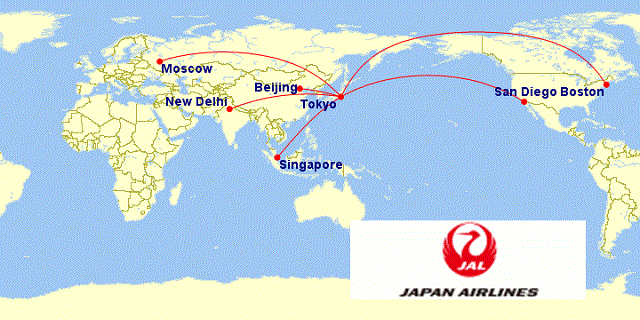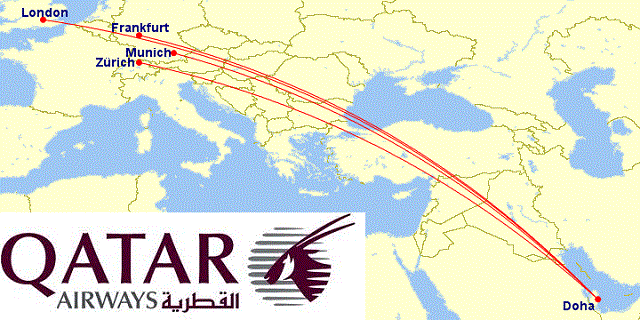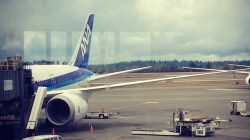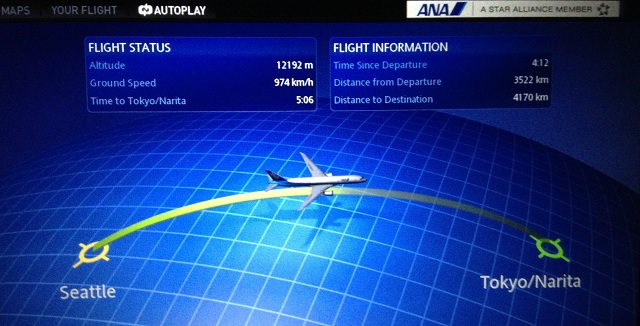
Above: moving map display on ANA flight NH1077 from Seattle to Tokyo Narita, my first 787 flight which I flew on October 25, 2012. The flight has since been pulled from service due to the aircraft grounding (see below)
Author’s note: this my second post discussing the recent 787 groundings and the implications of the FAA’s battery change approvals intended to put the airplane back into service in the near future. To read part one, click on the link to access, “Will the 787 ‘nightmare’ be over soon? Part I“
Go global, act local
Last Friday, the US Federal Aviation Administration approved Boeing Co’s proposed battery system design changes to be implemented across its 787 fleet. The next step involves waiting for the FAA to publish the final directive that will allow the 787 to return to service with the new battery modifications, which is expected to take place this week.
The FAA’s airworthiness directive will mandate the installation of containment and venting systems for the main and auxiliary battery systems on board the 787. Technically, this will only apply to the 787 aircraft operated by U.S. carriers (specifically, to the six 787s flown by United Airlines, which was the only U.S.-based operator of the Dream liner at the time of the groundings).
While regulatory agencies in other countries will oversee their own directive time lines to get the 787 flying again, they will obviously need to match the FAA’s requirements if they intend to operate their 787s on routes flying to the U.S.
Currently, there are approximately fifty 787s parked at 17 airports across 9 different countries, according to aviationweek.com. Referred to as an AOG, or “Aircraft On Ground” situation, each individual plane presently “stuck” at one of these airports will follow a standard recovery procedure determined by its airline owner before resuming service. At the time of the grounding, there were eight global carriers with the Dream Liner in service: Air India, All Nippon Airways, Ethiopian Airlines, Japan Airlines, LAN Airlines, Lot Polish Airlines, Qatar Airways and United.
Seat cushion on-board ANA flight NH 1077 from Seattle to Tokyo celebrating the “We Fly First” campaign. ANA will be the first 787 customer to receive the new battery installations as designed by Boeing.
“We Fly First”
All Nippon Airways of Japan was the first commercial airline to receive the Boeing 787 in September 2011, and is currently the largest operator of the 787 with 17 aircraft in service before they were pulled. As the launch customer for the Boeing 787, ANA created a “We Fly First” moniker back in the late 2000’s commemorating this unique milestone.
As such, ANA was also the first 787 customer to receive the redesigned lithium-ion battery installations on five of its grounded planes this week, a process which began on Monday. ANA plans to conduct between 100 and 200 round-trip test flights in May before hoping to carry passengers again in June, according to sources. More than 180 ANA pilots intend to get “re-accustomed” to flying the aircraft and renewing their licences after a 3-month hiatus.
United expects to begin work on its 787s this week, with hopes to have domestic flights go live on May 31. Ethiopian has even more ambitious plans to start flying its four 787s “within a matter of days.” More information on start dates can be found later in this post.
As mentioned in part I, Boeing has dispatched 10 teams of 300-plus employees, including airline advisers, engineers, quality inspectors and mechanics, to oversee the installation of the new battery kits.
Despite the ambitions of global airlines to have the 787 recommence service as soon as humanly possible, there is still a lot of information left to uncover. Even with the new battery approval in place, investigators in the U.S. and Japan are still attempting to uncover the cause of the two battery overheatings that occurred back in January. The National Transportation Safety Board is expected to hold public hearings on Tuesday and Wednesday of next week to unveil more details surrounding those incidences, which led to two fires on a ANA 787 in Japan and a JAL 787 in Boston.
Once the new battery installations are complete, the next phase for each airline involves receiving operational approval by their respective regulatory authority, which checks off whether the installation has been properly completed on each aircraft. Japan appears to be planning for additional safety requirements on the 787 before it resumes flying, including remote monitoring of the battery data and more frequent inspections. Currently, aircraft batteries are inspected about once every two years.
Worldwide 787 routes (or planned routes) flown by 8 global airline operators as of January 16, 2013, spanning 5 continents, 22 countries and 52 airports.
So where are they now?
Even though only a small handful of airlines were operating the 787 at the time of its grounding, dozens of routes were affected and multiple airports are playing host to the AOG situation.
Here’s a blow-by-blow update on each individual airline operator and where the 787s are stored, and when service resumption is expected to take place as it varies by carrier and route.
Air India
Air India had six Boeing 787s in service at the time of the grounding, which operate domestic routes between Delhi and Bangalore, Madras and Chennai, and internationally between Delhi and London Heathrow, Paris Charles de Gaulle and Frankfurt. All six airframes were in India at the time of the grounding, and are currently parked at the airlines’ maintenance facilities in Mumbai.
According to airlineroute.com, Air India’s first 787 flights are expected to resume on May 16 from Delhi to LHR, CDG and FRA. Until those dates, the Paris flight is being operated by a Boeing 777-300ER and the London and Frankfurt flights are being serviced by a Boeing 777-200LR series. Domestic flights within India are expected to resume on May 17.
Air India Boeing 787 routes, May 2013. Source: airlineroute.net
All Nippon Airways (ANA)
All Nippon Airways currently has 17 Boeing 787s previously in service. One is currently stranded in Frankfurt, the other 16 are in Japan. Those in Japan are currently being repaired or in maintenance facilities at Tokyo Haneda, Tokyo Narita, Matsayuma, Kumamoto and Okayama airports.
Unlike the other 787 operators, ANA deployed the majority of its 787 services on domestic routes within Japan, primarily from its Tokyo Haneda hub. There were three intercontinental routes at the time of the grounding: from Tokyo Haneda to Frankfurt, and from Tokyo Narita to Seattle, WA and San Jose, CA.
ANA is expected to resume domestic 787 services, as well as the Haneda to Frankfurt flight, on June 1, 2013. The Narita flight to San Jose is expected to resume on September 1, 2013, and the Seattle flight on September 2, 2013.
ANA intercontinental 787 routes, September 2013 (note: domestic Japan flights not shown). Source: airlineroute.net
Ethiopian Airlines
Ethiopian Airlines had four B787s in service as of January 2013, all of which arrived at its hub in Addis Ababa at the time of the grounding.
Ethiopian had previously announced intentions to resume 787 flights on April 25, 2013 from Addis Ababa to Dubai, but at the time this article was written, it was reported that ET had cancelled these plans. Instead, the East African carrier plans to operate one-off service to Nairobi, Kenya on Saturday, April 27, and a tentative flight from ADD to DXB on April 26 (although according to airlineroute, this is likely to change).
Additionally, Ethiopian has revised its Addis Ababa – Frankfurt re-launch date by moving it forward six weeks from June 16 to April 28. Services from ADD to Mumbai, Washington Dulles (which operates via Rome westbound), Lusaka, Zambia and Harare, Zimbabwe are expected to recommence mid-May, and from ADD to Johannesburg in mid-June.
Ethiopian B787 routes as of April 2013. Note: the Addis Ababa to Washington route makes a technical stop in Rome, IT on the eastbound sector. Source: airlineroute.net
Japan Airlines (JAL)
JAL, or Japan Airlines, has seven 787s grounded. Six are on the ground in Japan, (5 at Narita airport, 1 at Haneda) and one is stranded in Boston, following the battery incident which caused a fire on January 7).
Similar to ANA, JAL currently does not have plans to resume 787 services until June 1, at the earliest. Prior to the grounding, JAL flew its 787s from Narita to Boston, Delhi, Moscow, San Diego and Singapore, with plans to launch nonstop service to Helsinki, Finland this spring (those plans have since been shelved). JAL also operated two daily nonstop flights from Haneda to Beijing and Singapore.
JAL Boeing 787 routes as of June 2013. Source: airlineroute.net
LAN Airlines
South American carrier LAN Airlines had three B787s in operation at the time of the grounding, all of which are in a maintenance facility at its headquarters in Santiago de Chile.
LAN plans to resume its 787 flights in June, operating Santiago – Lima – Los Angeles starting June 1, and Santiago – Madrid – Frankfurt starting June 30. The carrier has currently suspended 5th freedom services on its Madrid – Frankfurt sector until the 787 returns to service.
LAN 787 routes as of June 2013. Source: airlineroute.net
LOT Polish Airlines
LOT Polish Airlines had two Boeing 787s in operation at the time of the grounding. As mentioned in a previous post, LOT’s inaugural 787 flight from its Warsaw hub to Chicago took place on January 16. One aircraft with the registration SP-LRA is currently on the ground in Chicago, while its sister ship, SP-LRB, is in a maintenance facility at Warsaw.
The situation with LOT appears to be the most hot-and-cold of all of the eight operators. Initially, LOT was the one airline that had pushed back service resumption dates the furthest, to October 27, 2013. The affected routes in LOT’s network were from Warsaw to Beijing, Chicago, New York and Toronto.
However, it was announced mid-day on April 25 that LOT plans to resume its 787 operations on June 5, launching 11 weekly flights to Chicago, followed by 3 weekly flights to Toronto on June 7, and 2 weekly services to New York JFK on June 30. No further announcements have been made about the Warsaw to Beijing flight at the time this post was written.
Separately, LOT is leasing a Boeing 767 from EuroAtlantic, and a Airbus A330-200 from HiFly, to support its long-haul operations during the month of May, according to airlineroute.net
LOT 787 routes as of October 2013. Source: airlineroute.net
Qatar Airways
Doha-based Qatar Airways had five 787s in operation at the time of the grounding. Four are parked at its Doha hub, while one is at London Heathrow airport.
Qatar plans on resuming its first 787 flight on May 15 to London Heathrow. Following this, it plans to re-launch flights to Munich on May 20, Frankfurt on May 25 and Zurich on June 1.
Qatar Airways 787 routes as of May 2013. Source: airlineroute.net
United Airlines
Finally, the eighth operator of the 787, and also the world’s largest airline, United Airlines, had six 787s in operation at the time of the grounding. Four are at its Houston Bush Intercontinental airport maintenance facility, one is at its Los Angeles hub and the remaining one is at its Tokyo Narita hub.
United plans to start off by launching its 787 on domestic services initially between Houston and Denver on May 31. From there, it hopes to launch its long-anticipated Denver to Tokyo flight on June 10, along with Houston to London Heathrow on the same date, followed by Houston to Lagos, Nigeria and Los Angeles to Tokyo on August 1, and finally Los Angeles to Shanghai on August 2.
United Airlines 787 routes as of May 2013. Source: airlineroute.net
Final words
The grounding has cost Boeing an estimated USD $600 million, and this number excludes the compensations that several airlines plain to seek from the manufacturing giant. LOT’s CEO allegedly stated on Wednesday that their airline “will go after Boeing for hundreds of millions of Polish zlotys in losses,” according to news sources.
And that may just be the beginning. The more intimidating thought is, even once the aircraft is safely back in the air, will this remain the case? Until the root cause of the battery heatings and subsequent fires is determined, it remains to be determined whether or not the patch job is an acceptable long-term fix.
As I wrote in the last blog entry, Boeing made the mistake prior of over-emphasizing cost reduction, fuel efficiency and energy conservation over quality assurance. It is my sincerest hope that given the nearly 4-month reprieve, Boeing has, in its second attempt back at the drawing board, not repeated the same mistake expecting a different outcome.
Fingers crossed…


